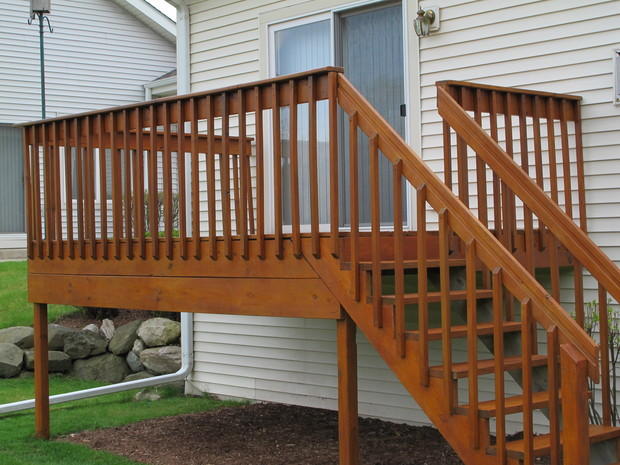
Deck mold is never a good sign. The appearance of mold anywhere on, around, or under your deck, is cause for concern and necessitates that you take action. Where the mold appears, and how severe the problem is, however, can require drastically different solutions.
Mold and Mildew Below the Deck
Mold that appears on the ground below the deck is a sign one of thing only: too much moisture. It is possible for mold and mildew to accumulate below the deck because it was built too close to the ground, but it’s more likely that water and moisture are accumulating there because of improper drainage or faulty grading. Adding ventilation will help solve the problem if your deck was simply built too close to the ground, as it will allow for trapped moisture to escape. With no moisture buildup, you shouldn’t have any more problems with mold and mildew. If poor construction habits aren’t the issue, then you’ll want to have the situation evaluated by a professional. It’s likely you’ll need to either install a drainage system to help remove unwanted moisture, or you’ll need to figure out a way to re-grade the landscaping so water doesn’t accumulate beneath the deck in the first place.
Deck Mold and Deck Mildew on the Deck Itself
The appearance of deck mildew and mold on top of the deck is actually a more common problem than mold and mildew below. The cause of your mold problem, as well as your mold removal strategies, will vary depending on your decking material.
Wood Decks
If you’ve got a wood deck with mold and deck mildew problems, the most likely cause is neglect. Chances are that you (or the person you bought the house from) have not treated the deck for a long time. If so, your deck is probably showing other signs of deterioration as well, such as graying boards, and maybe some cracking and splintering. Assuming there’s no rot involved, you’re in luck. Whether you do it yourself, or hire the job out to a contractor who specializes in mold removal, deck restoration, and deck treatment, you can bring your deck back from the brink. Begin by spraying the deck with a bleach mixture to kill the mold and mildew. After that, sand down your deck and treat it with an oil based wood sealer. You’ll be amazed at the results. After that, don’t forget to re-treat the deck about every five years. Doing so keeps the wood in good shape and helps it to repel moisture, as well as the deck mold that thrives on it.
Ready to start your deck mold/mildew?
Find ProsComposite Decking
If there is mold on your composite decking, you’ve got a different mold removal problem altogether. When composite materials first came out, mold was a major problem caused by the use of certain recycled materials in the “wood” that fostered mold and mildew growth.
The industry has come a long way since then, working hard to eliminate mold problems in the material altogether. You may, however, still experience some deck mold, especially in wetter climates. The only sure-fire way to remove deck mold from composite decking is with some elbow grease and a recommended deck cleaner that contains Sodium Hypochlorite. It may take several applications, and you’ll want a stiff bristled brush and some good knee pads to really attack the problem, but mold removal is possible.
After you eliminate the deck mold, be sure to clean your deck with your hose and a high pressure nozzle on a regular basis. Doing so should help to prevent your mold problems from returning over time.
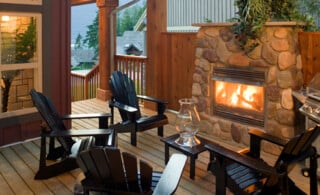 Understanding Deck Construction
Understanding Deck Construction 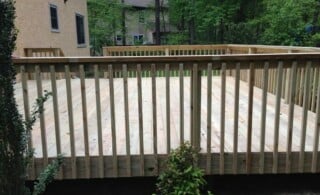 Wood Deck Maintenance
Wood Deck Maintenance 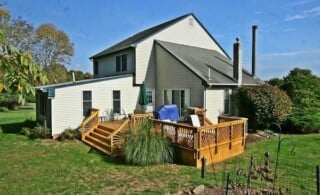 Should You Build a Deck or Hire a Pro?
Should You Build a Deck or Hire a Pro? 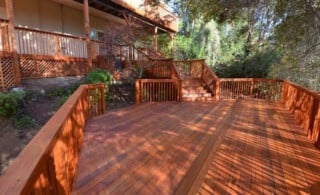 3 Benefits of Under-Deck Stain
3 Benefits of Under-Deck Stain 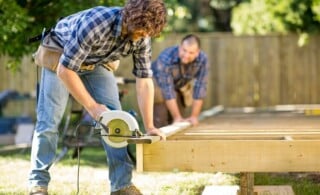 How to Find & Hire the Right Deck Carpenter or Contractor
How to Find & Hire the Right Deck Carpenter or Contractor 

Are You Familiar With This Topic? Share Your Experience.